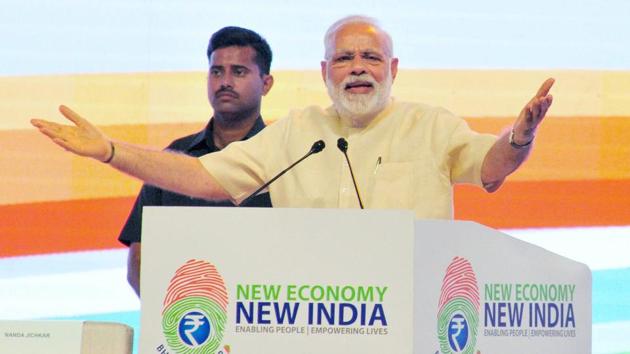PM Modi’s vision of a ‘new India’ needs substance not NITI Aayog’s ‘goodie bag’
Prime Minister Narendra Modi’s grand vision of a “new India” needs substance and strategy, not the fantasies that Niti Aayog is trying to sell.
Last Sunday, the Niti Aayog held the third meeting of its governing council where vice-chairman Arvind Panagariya presented a 15-year vision statement that seeks to transform India into “a prosperous, highly educated, healthy, secure, corruption-free, energy-abundant, environmentally clean and globally influential nation” by 2031-32. The presentation drew from a speech Prime Minister Narendra Modi delivered in Kozhikode in September, when he listed eight key features of economic development he would like to see in times to come.

Few would disagree with the goals Panagariya outlined at the meeting that was held under the prime minister’s chairmanship, with several senior Cabinet ministers and chief ministers from all but two states in attendance. The goals pursued by successive governments in the past have been no different, but the outcomes have often fallen short of the stated objectives, because either the strategy was flawed or its implementation was inadequate.
Can Niti Aayog help Modi’s government buck the trend?
Besides the vision statement, the Aayog was mandated to design a seven-year strategy and a three-year action plan effective through this fiscal year. The strategy is yet to be framed, but a draft of the three-year-plan was circulated at Sunday’s meeting and has since been posted on the Aayog’s website. Perhaps, the first blunder has been committed: Of putting the cart before the horse.
The plan for 2017-18 to 2019-20 has turned out to be an exercise in incrementalism and a document full of wishful targets, which are neither backed by past trends nor supported by sound economic logic. It doesn’t reflect any strategic thinking because there is none. For any vision to come true, there has to first be a strategy, and then an action plan. And for an action plan to be effective, the strategy must have a buy-in from the political class.
That said, let’s turn to the vision statement and see if it is good enough to guide the formulation of an appropriate strategy.
As Pronab Sen, an economist who spent 15 years in the Planning Commission being the strategic thinker behind several Five-Year Plans, argues: A good vision statement must capture the imagination of the nation, should be seen to have full political commitment, especially at the highest level, and it must force the strategic thinkers and technocrats to go beyond mere extrapolations. In a research paper to be published in the Economic and Political Weekly, Sen draws parallel between Modi’s ‘sabka saath sabka vikas’ slogan with Indira’s Gandhi’s ‘garibi hatao’ campaign — overarching vision statements that have had a powerful impact on the collective psyche, but not quantitative in their character.
In Gandhi’s case, once the campaign was coined, policy makers were forced to first define garibi (poverty) in a measurable, politically-acceptable manner, and then recast the planning model to include poverty reduction as a specific target, Sen points out. The result: The fifth Five-Year Plan, which made garibi hatao its centrepiece, was one of the most successful among the 12 Five-Year Plans that the Planning Commission rolled out before Modi decided to scrap it.
In contrast, Niti Aayog has failed to provide substance to Modi’s vision. According to Panagariya’s power point presentation, the only publicly available document on the 15-year roadmap, India’s economy can grow more than three-fold because China’s economy did so in the past 15 years. Worse, it goes on to argue if per capita income grows three-fold by 2031-32, “nearly all Indians” will have “access to two wheelers/cars, air conditioning and other white goods”.
Panagariya might just have leaped beyond even possible statistical imagination here. Only 20% of Indians currently earn more than India’s per capita income, while 60% earn less than a third of it. And, in a country where more than half still lack access to basic amenities, Dipti Jain, writing in Mint, might have rightly accused the Niti Aayog of selling fantasies. But the real question could be even more diabolical: Has the messenger (Niti Aayog) killed the message (the Prime Minister’s grand vision)?
@RajeshMahapatra





